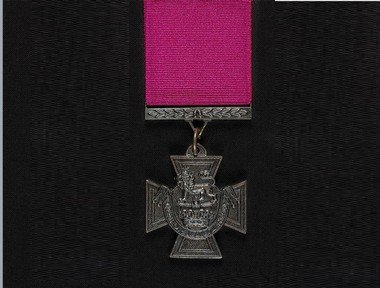Quiz Answer Key and Fun Facts
1. Charles Davis Lucas was a junior officer in the Royal Navy when he was awarded the very first Victoria Cross, but in which theatre of the Crimean War was he serving when he received it?
2. Having already been awarded the Victoria Cross, in 1870 William Manley became the first person to also receive which other gallantry award?
3. The Battle of Rorke's Drift saw a total of eleven Victoria Crosses awarded, with seven to members of the 2nd Battalion, 24th Regiment of Foot. However, Lieutenant John Chard, the senior officer present, was not part of the 24th Foot, but was instead part of which part of the British Army?
4. John Travers Cornwell was aged just 16 when he was posthumously awarded the Victoria Cross following his service at the Battle of Jutland in May 1916. Of which ship was he a member of the crew?
5. In September 1916, William Leefe Robinson was awarded the Victoria Cross for his action as the first British fighter pilot to shoot down a German airship. In which type of aeroplane was he flying?
6. Serving with the Royal Army Medical Corps, Noel Godfrey Chavasse was the only man to be awarded the Victoria Cross twice during the First World War. His first came at the Battle of Guillemot in 1916, but during which action did he receive his second?
7. Guy Gibson served as the commanding officer of No 617 Squadron when he was awarded the Victoria Cross for leading Operation Chastise - the famous "Dambusters" Raid. Which of the Ruhr dams was his the first aircraft to attack?
8. In 1943, Lloyd Trigg was awarded a posthumous Victoria Cross, the first time an award was made based solely on evidence provided by the enemy. Although he served with the Royal Air Force, Trigg was an officer of which country's air force?
9. Rambahadur Limbu of the 10th Princess Mary's Own Gurkha Rifles received the only Victoria Cross awarded to the British Army between the Korean and Falklands conflicts. In which conflict was he serving when he received his award?
10. 'H' Jones was serving as the commanding officer of 2nd Battalion, The Parachute Regiment when he was awarded a posthumous Victoria Cross during the Falklands War, but into which infantry regiment was he commissioned when he first joined the British Army?
Source: Author
Red_John
This quiz was reviewed by FunTrivia editor
stedman before going online.
Any errors found in FunTrivia content are routinely corrected through our feedback system.
